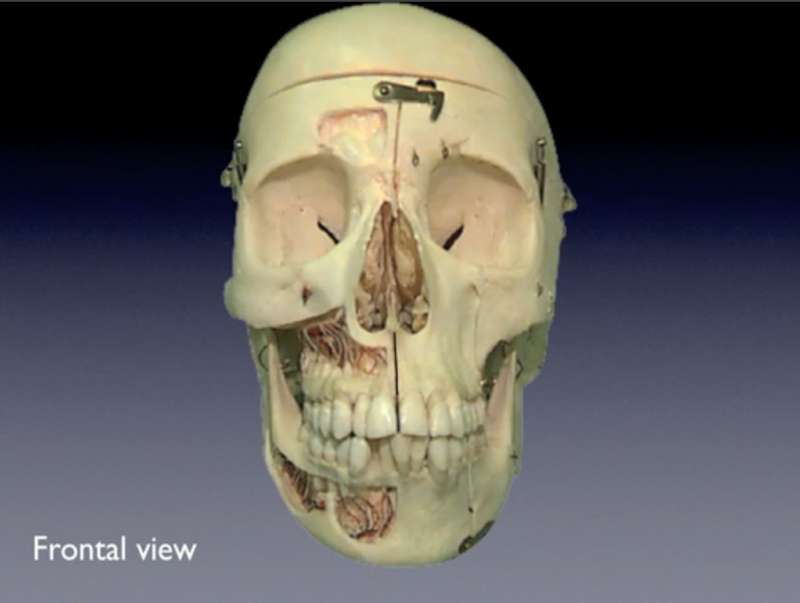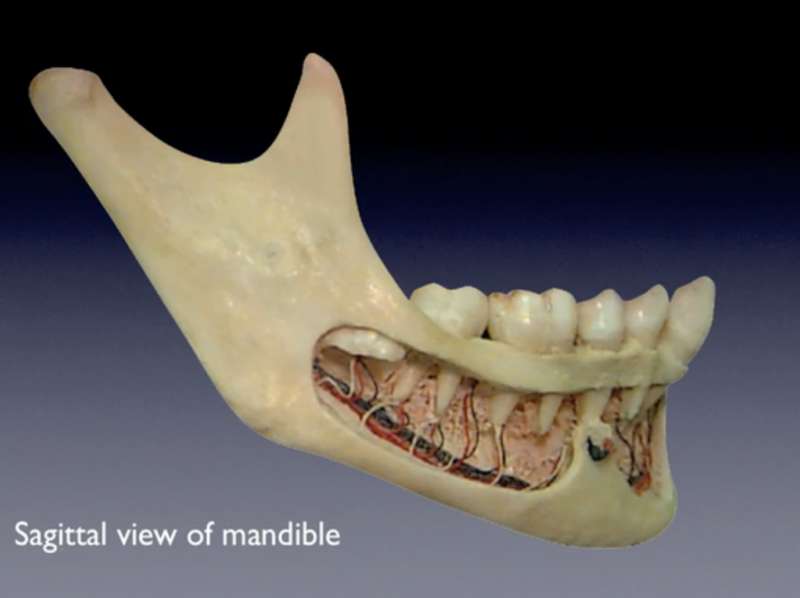Maxilla & Mandible
Maxilla
The bones of the skull that provide anchorage for the teeth are the paired maxillary bones and the mandible. The maxillary bones are sutured at the midline and initially house the 10 primary (deciduous) teeth. When the permanent (secondary) dentition is fully erupted, 16 permanent teeth are present in the maxillary arch.

Click on the movie icon above to view the osteology of the skull.
Mandible
The mandible is comprised of specific anatomical regions. The body of the mandible houses the teeth of the mandibular arch. The single u-shaped mandible contains 10 primary (deciduous) teeth and then the 16 teeth of the permanent dentition. The bone surrounding the teeth is called alveolar bone. Loss of teeth results in loss of alveolar bone. The ramus
of the mandible houses the teeth of the mandibular arch. The single u-shaped mandible contains 10 primary (deciduous) teeth and then the 16 teeth of the permanent dentition. The bone surrounding the teeth is called alveolar bone. Loss of teeth results in loss of alveolar bone. The ramus of the mandible is connected to the body and is the region that has the mandibular foramen and lingula on its medial aspect. This is the location for needle placement to anaesthetize the mandibular teeth in a typical mandibular block. The angle
of the mandible is connected to the body and is the region that has the mandibular foramen and lingula on its medial aspect. This is the location for needle placement to anaesthetize the mandibular teeth in a typical mandibular block. The angle of the mandible is the region where the body and ramus meet. The condyle
of the mandible is the region where the body and ramus meet. The condyle is the bony portion of the complex temporomandibular joint. The u-shaped mandible has two condyles in a ginglymoarthrodial type of joint. The coronoid process
is the bony portion of the complex temporomandibular joint. The u-shaped mandible has two condyles in a ginglymoarthrodial type of joint. The coronoid process provides an attachment for the insertion of the temporalis muscle and the deep masseter muscle. The mandibular notch
provides an attachment for the insertion of the temporalis muscle and the deep masseter muscle. The mandibular notch is the concave area of the superior portion of the mandible between the condyle and coronoid process.
is the concave area of the superior portion of the mandible between the condyle and coronoid process.

Click on the movie icon above to view the anatomical regions of the mandible.



